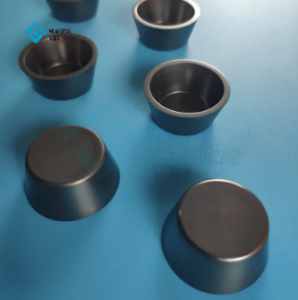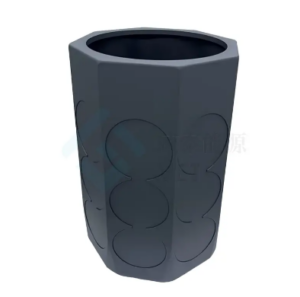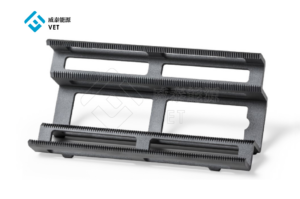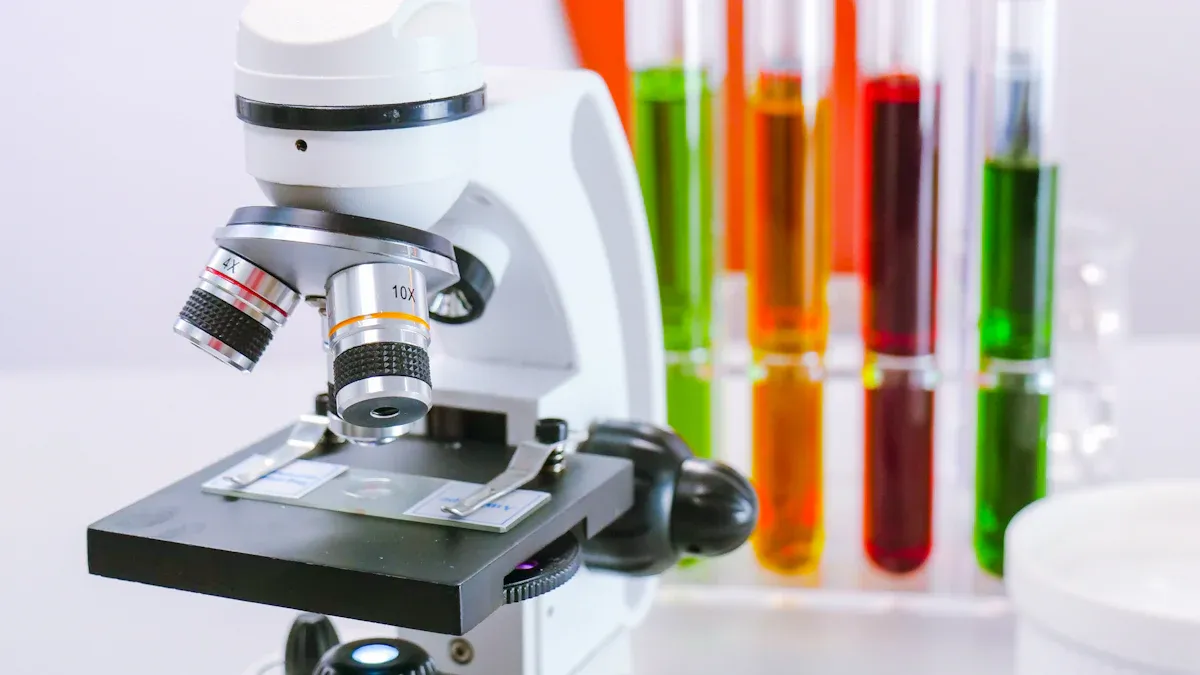
SiC Reflector provides outstanding performance in demanding environments. Engineers value its ability to withstand high temperatures. The material resists scratches and chemical attacks. Many industries rely on this reflector for its strength and stability. Users see reliable results even in tough conditions.
Kunci takeaways
- SiC reflectors offer outstanding strength, thermal stability, and chemical resistance, making them ideal for harsh environments like aerospace and solar power.
- Despite their high cost and manufacturing challenges, SiC reflectors provide long-lasting performance and durability that other materials cannot match.
- SiC reflectors excel in high-temperature, chemically aggressive, and precision optical applications, supporting advanced technologies with reliable and stable results.
SiC Reflector vs. Other Materials: Quick Comparison
Key Pros and Cons
When engineers compare reflector materials, they look at several important factors. SiC Reflector stands out for its unique blend of properties. The table below highlights the main advantages and disadvantages of SiC and other common reflector materials:
| Aspect | Advantages | Disadvantages |
|---|---|---|
| Material Properties of SiC | High stiffness and hardness; excellent thermal and dimensional stability under temperature and humidity changes; reasonable density; higher fracture toughness than glass; better specific stiffness and elastic modulus than beryllium (which is toxic). Ideal for space optical instruments. | N/A |
| CVD SiC Coating | Dense coatings with excellent optical properties (surface roughness <0.3 nm RMS); meets mirror surface requirements; effective for surface modification. | High substrate temperature (>1000°C) can deform SiC matrix; time-consuming process; some CVD methods have poor uniformity or low growth rates. |
| PVD Si Coating | Low substrate temperature (<300°C); easy to polish; reproducible; simple preparation; dense structure with strong bonding; industrially accessible. | Modified films can be difficult to polish; slower deposition rates. |
| Hot Pressed Glass Cladding | Economical and polishable thin glass layer bonded without adhesive. | CTE mismatch and internal stresses limit use on large mirrors. |
| Si/SiC Cladding | Strong chemical bonding; tunable CTE; surface roughness <2 nm RMS achievable; suitable for conventional optics. | Not suitable for superpolished surfaces below 1 nm RMS microroughness. |
Note: SiC Reflector offers excellent physical and optical properties, but achieving ultra-smooth surfaces can be challenging. Some coatings require high temperatures or long processing times, which may affect the final product.
Engineers often choose SiC Reflector for its strength, stability, and resistance to harsh environments. Other materials like glass or aluminum may cost less or polish more easily, but they cannot match the durability and performance of SiC in demanding applications.
Unique Strengths of SiC Reflector
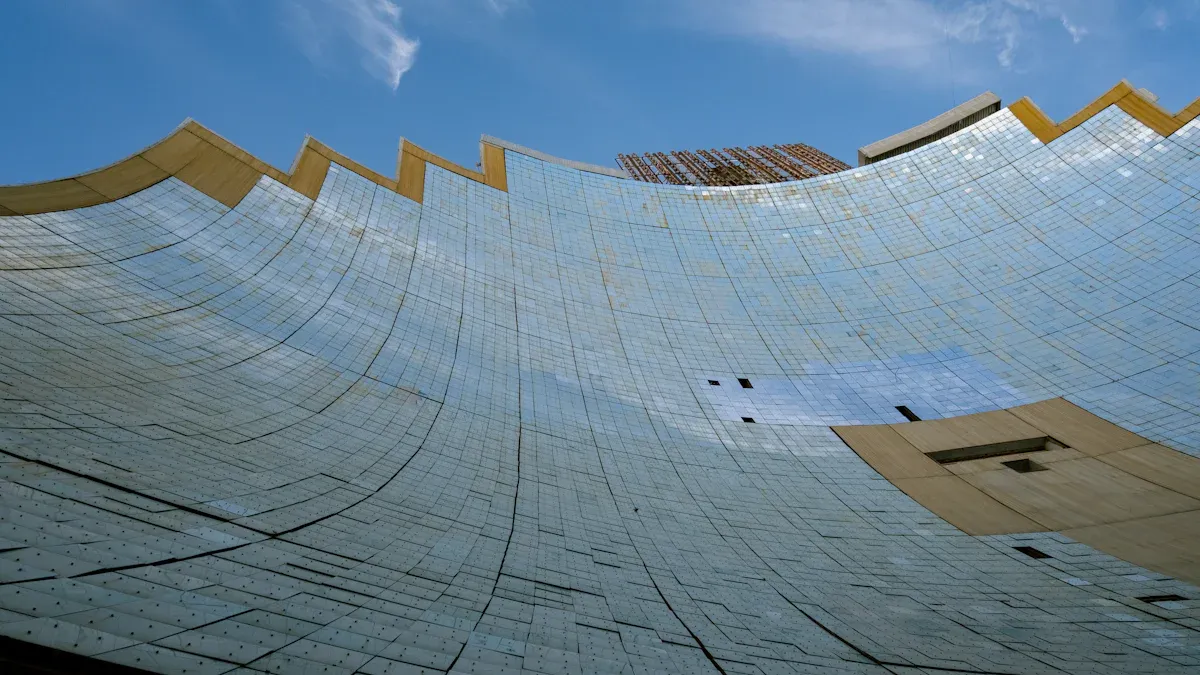
Exceptional Thermal Stability
SiC Reflector performs well in environments with extreme heat. The material keeps its shape and function even when temperatures reach very high levels. Many engineers choose SiC Reflector for applications that require stability during rapid temperature changes. This stability helps prevent warping or cracking, which can damage other materials. SiC Reflector remains reliable in industries such as aerospace, semiconductor manufacturing, and high-power laser systems.
SiC Reflector can operate at temperatures up to 800 °C and beyond, making it a top choice for high-temperature applications.
Superior Mechanical Durability
SiC Reflector stands out for its impressive mechanical strength. It resists scratches, dents, and other forms of physical damage. This durability comes from its unique structure and composition. The following table shows key mechanical properties measured in laboratory settings:
| Mechanical Property | Measured Value | Measurement Method |
|---|---|---|
| Hardness | 38.0 GPa | Nanoindentation with Berkovich indenter |
| Young’s Modulus | 429.3 GPa | Nanoindentation with Berkovich indenter |
These values show that SiC Reflector is much harder and stiffer than many other reflector materials. This strength allows it to last longer and perform better in demanding environments.
High Reflectivity in Select Wavelengths
SiC Reflector offers high reflectivity in certain parts of the infrared spectrum. In the IR range from 2.5 to 14.5 microns, its reflectivity changes with wavelength. The reflectivity is low at shorter wavelengths, drops near 10 microns, and then peaks around 12.5 microns. This peak reflectivity increases as the temperature rises, with measurements taken between 358 K and 520 K. While SiC Reflector does not provide high reflectivity in the ultraviolet range, its performance in the IR makes it valuable for thermal imaging, sensors, and some laser systems.
Chemical Resistance and Longevity
SiC Reflector resists damage from chemicals and harsh environments. It does not corrode easily, even when exposed to acids, bases, or other aggressive substances. This chemical resistance helps the material maintain its performance over time. Porous silicon carbide can operate under extreme thermal cycling at temperatures of at least 800 °C. Testing suggests that SiC Reflector can provide over 25 years of continuous service in high-stress environments. This long lifespan reduces the need for frequent replacements and lowers maintenance costs.
Many industries trust SiC Reflector for critical applications because of its proven durability and resistance to both mechanical and chemical stress.
SiC Reflector: Limitations and Trade-offs
Cost Considerations
SiC Reflector offers many advantages, but cost remains a significant barrier for many projects. The raw materials for silicon carbide are expensive. Processing and finishing steps add to the total price. Specialized equipment and skilled labor increase costs further. Many industries find that the price per unit rises quickly, especially for custom or large-scale orders. High costs can limit the use of SiC Reflector to only the most demanding applications.
Note: The high cost often includes not just the material, but also the time and expertise needed for design, prototyping, and testing.
Manufacturing Complexity
Producing SiC reflectors at scale presents several technical challenges. The following list highlights the main difficulties manufacturers face:
- SiC’s extreme hardness makes machining slow and costly. Grinding and diamond cutting require advanced tools.
- Achieving ultra-smooth optical surfaces is difficult. The grain structure and porosity of SiC demand advanced polishing methods like chemical mechanical polishing.
- Thermal stress and deformation can occur due to mismatches in thermal expansion between the substrate and coatings.
- High raw material and processing costs, along with complex fabrication steps, limit large-scale production.
- Shaping and polishing large-aperture SiC mirrors often have low efficiency and precision.
- Surface defects such as concave pits and comet-like marks can form during manufacturing.
- Manufacturing cycles are long, sometimes taking several months, which slows down deployment.
Manufacturers also report yield issues and surface defects. The table below summarizes common problems and their impact on quality:
| Defect/Yield Issue Source | Description | Impact on Yield/Quality |
|---|---|---|
| Reaction bonded SiC (RB-SiC) polishing | Si phase polishes faster than SiC phase, causing non-uniform surface steps. | Non-uniform surface reduces polishing quality and yield. |
| CVD SiC coating | Superior optical characteristics but process is extremely challenging and time-consuming. | Lower yield due to surface stress deformations. |
| PVD SiC coating | Causes pitting and protuberances from globular SiC particles. | Surface defects increase micro-roughness, reducing yield. |
| PVD Si coating | Causes pinholes and scratches. | Surface micro-roughness affected, impacting yield. |
These factors make it difficult to produce high-quality SiC reflectors quickly and at a reasonable cost.
Application-Specific Limitations
SiC reflectors face several limitations in specialized industries. Some of the most common challenges include:
- High costs for design, prototyping, and testing.
- Manufacturing complexity that requires precise alignment and advanced skills.
- Long development times that delay time-to-market.
- Limited scalability, with high per-unit costs for large orders.
- Specialized maintenance and servicing needs.
- Material limitations for high numerical aperture objectives under extreme conditions.
- Sensitivity to contamination, especially in extreme ultraviolet (EUV) systems.
In aerospace, semiconductor, and optical industries, these challenges can restrict the use of SiC reflectors. For example, achieving both high density and strength in SiC materials is difficult. Sintering processes often struggle to create dense, strong reflectors. Additive manufacturing methods can introduce residual carbon or internal stresses, leading to cracks or weak layers. These issues reduce the reliability and performance of the final product.
Engineers continue to develop new methods, such as using transparent organic particles in the SiC slurry, to improve curing depth and mechanical strength. These innovations help address some limitations, but many challenges remain.
SiC Reflector Compared to Alternatives
SiC Reflector vs. Aluminum
SiC Reflector offers clear advantages over aluminum in high-performance optical systems. Engineers often select SiC for primary and secondary mirrors in Ritchey-Chrétien telescopes. Its athermal behavior and lightweight design help maintain consistent imaging performance, even when temperatures change. This stability reduces the risk of image distortion and lowers launch costs in aerospace projects. In thermal management, SiC-based coatings on aluminum can lower surface temperatures by over 30 °C during the day. These coatings also keep surfaces cooler at night. Aluminum reflectors cost less and are easier to machine, but they cannot match the thermal stability or durability of SiC in demanding environments.
SiC Reflector vs. Silver
Silver reflectors provide high reflectivity in the visible spectrum. Many lighting and decorative applications use silver for this reason. However, silver tarnishes easily and loses performance in harsh environments. SiC Reflector resists corrosion and maintains its properties over time. In applications where durability and thermal stability matter most, SiC outperforms silver. Silver remains a good choice for cost-sensitive projects that do not face extreme conditions.
SiC Reflector vs. Gold
Gold reflectors excel in infrared reflectivity and resist oxidation. They often appear in specialized optical and scientific equipment. Gold, however, is expensive and soft. It scratches and deforms more easily than SiC. SiC Reflector provides better mechanical strength and longer service life in harsh settings. Gold works well for precise IR applications, but SiC offers a stronger, more durable solution for environments with high stress or temperature.
SiC Reflector vs. Glass
SiC Reflector stands out for its mechanical durability compared to glass. Tests show that SiC coatings on glass increase adhesion strength and hardness. Bulk SiC materials display higher bending, tensile, and compressive strength than glass. The table below highlights these differences:
| Property | SiC Reflectors (S-SiC) | Glass Reflectors |
|---|---|---|
| Bending Strength | > 375 MPa | Lower |
| Tensile Strength | 200 MPa | Lower |
| Compressive Strength | 3000 MPa | Lower |
| Hardness (HV 500) | 22 GPa | Lower |
| Toughness (K1c) | 3.5 MNm−3/2 | Lower |
| Fatigue Resistance | Excellent | Lower |
SiC Reflector also maintains optical performance under temperature changes. Its low thermal expansion and strong, lightweight structure make it ideal for large, high-precision systems like space telescopes. Glass reflectors are easier to machine and polish, but they lack the strength and durability of SiC in demanding applications.
Best Use Cases for SiC Reflector

High-Temperature Environments
SiC Reflector performs exceptionally in settings where heat reaches extreme levels. Concentrated solar power plants use SiC-based components in solar receivers that operate above 900 °C. These receivers rely on the material’s mechanical toughness and high thermal conductivity. The H2020 NEXTOWER project highlights the use of porous SiC and silicon-infiltrated silicon carbide ceramics for handling high thermal gradients and corrosive conditions. Other industries, such as automotive and aerospace, also benefit from SiC’s ability to maintain stability and strength under intense heat.
| Industry Segment | Usage Context | Performance Data Supporting SiC Reflectors | Innovations Enhancing Performance |
|---|---|---|---|
| Automotive Industry | Advanced automotive lighting (LED, laser headlights, ADAS systems) | High thermal stability, superior thermal conductivity, hardness, and resistance to heat and light | Improved surface finish, specialized coatings, enhanced thermal management |
| Industrial Laser Segment | Material processing: cutting, welding, marking | SiC’s ability to withstand intense heat and maintain high reflectivity | Advanced polishing, coating techniques, thermal management |
| Concentrated Solar Power (CSP) Plants | Solar receivers operating at temperatures >900 °C | Mechanical toughness, high thermal conductivity, thermal stability | Use of porous SiC and SiSiC ceramics for high thermal gradients |
| Aerospace and Other High-Temperature Applications | High heat flux environments requiring mechanical toughness | Mechanical toughness, controlled thermal expansion behavior demonstrated in C/SiC composites | Material innovations for heat flux resistance and durability |
Harsh Chemical or Mechanical Conditions
SiC Reflector stands up to aggressive chemicals and mechanical stress. Many industries choose SiC for environments where corrosion or wear destroys other materials.
- SiC remains chemically inert and stable at high temperatures.
- Porous SiC protects ammonia sensors, allowing only the sensing area to interact with ammonia.
- MOS-based hydrogen sensors with SiC operate reliably above 700 °C.
- Protective coatings, such as atomic layer deposition with SiC, increase device durability.
- 3D-printed SiC reflectors endure neutron irradiation up to 2.3 dpa at 400–850 °C without losing strength or structure.
Precision Optical Applications
SiC Reflector supports advanced optical systems that demand accuracy and reliability. Telescopes and laser systems benefit from its lightweight construction and high stiffness, which reduce launch costs and energy use. The material’s nanometer-level surface accuracy enables sharp, high-resolution imaging. SiC’s low coefficient of thermal expansion and high thermal conductivity ensure stable performance, even with temperature changes. Radiation resistance extends the lifespan of space-based optics. Manufacturers can create large aperture mirrors, improving light collection and imaging power.
- Experts recommend SiC Reflector for applications needing durability, thermal stability, and chemical resistance.
- Industries like aerospace and chemical processing benefit from its high mechanical strength and corrosion resistance.
- Alternatives such as aluminum or glass suit less demanding needs.
- Careful material selection ensures long-term performance in harsh environments.
FAQ
What industries use SiC reflectors most often?
Aerospace, semiconductor, and solar power industries use SiC reflectors. These sectors need materials with high durability, thermal stability, and chemical resistance.
How long does a SiC reflector typically last?
Most SiC reflectors last over 25 years in harsh environments. Their chemical resistance and mechanical strength help extend service life.
Can SiC reflectors be used in optical telescopes?
Yes. Engineers use SiC reflectors in optical telescopes for their lightweight structure, high stiffness, and stable performance during temperature changes.

